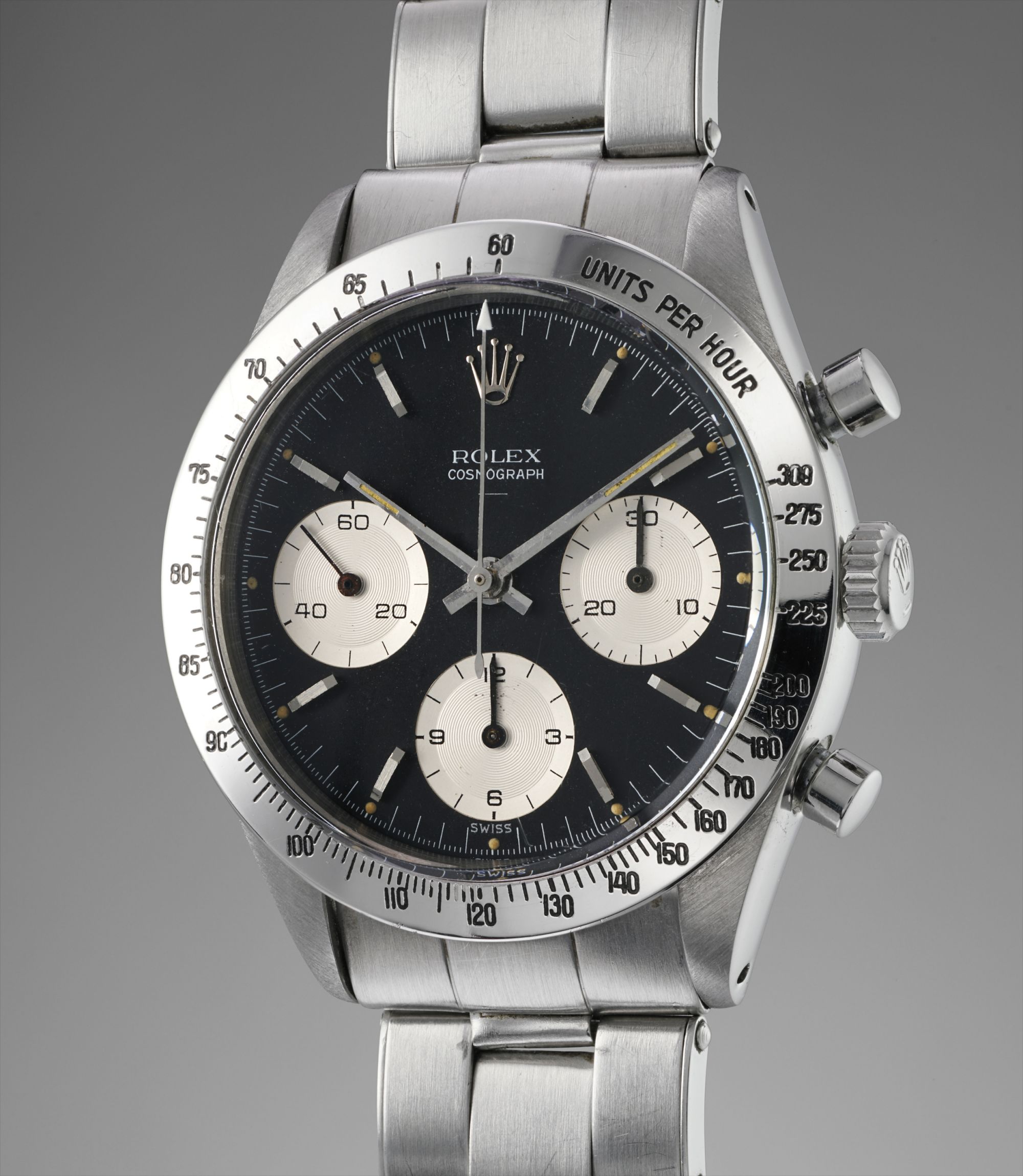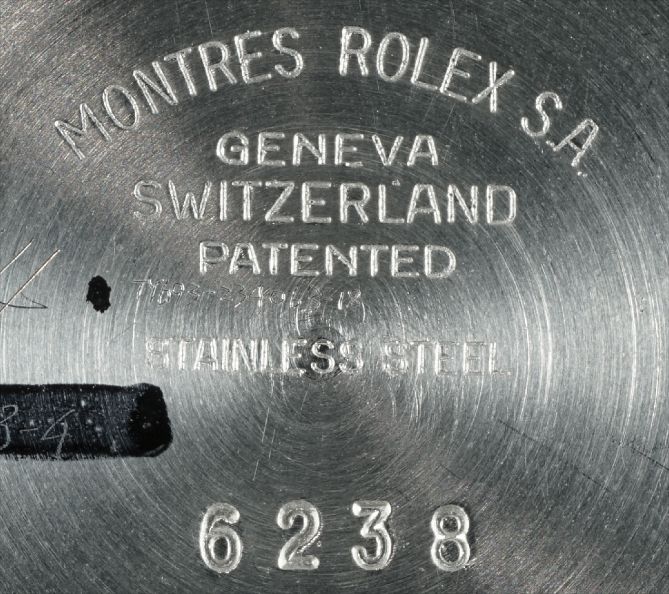







195
Rolex
Ref. 6239 inside case back stamped 6238
Cosmograph "Double Swiss Underline"
A highly rare and attractive stainless steel chronograph wristwatch with "Double Swiss Underline" dial, bracelet and fitted presentation box
Full-Cataloguing
The present watch is among the very first examples of reference 6239 ever produced, and displays all the correct attributes of a watch manufactured in 1963. The bezel, firstly, is the most earliest variant produced by Rolex. A Mk1 example, it is calibrated to 300 units per hour, and features small hash marks. Later examples would feature dots instead of hash marks. It is also instantly recognizable by the 275 intermediary unit, which cannot be found on later examples.
The black dial is the most exciting aspect of the watch, namely in its "Double Swiss Underline" designation.
Rolex had originally used stamps that were designed for use on previous models. Since the bezel of the new "Cosmograph" was larger, and covered the edge of the dial, Rolex had to redesign the stamps, and print "Swiss" again, this time immediately visible to the viewer. Today, this "Double Swiss" designation is very collectible, providing scholarship for the collector.
Furthermore, Rolex applied an "Underline" below the Cosmograph text, which scholars hypothesize as signifying a transition from radium to tritium on the dial.
Other small details pull the watch together, such as the 6238 case back, which is correct as Rolex usually used the leftover case backs from previous models. The hands are also slightly longer and thinner, almost touching the edge of the hour markers. The reference 7205 bracelet is also fitted with the coveted 71 end links.
To date, no more than a dozen of "Double Swiss Underline" watches have come to the auction market, as their idiosyncrasies and attributes only appear in a very tight serial range. Most interestingly, the present watch is 65 digits away from another "Double Swiss Underline" reference 6239 with black dial sold at Phillips Geneva Watch Auction Five. Given the close serial range, it is very likely that both watches were cased and finished on the same day.
Rolex
Swiss | 1905Founded in 1905 England by Hans Wilsdorf and Alfred Davis as Wilsdorf & Davis, it soon became known as the Rolex Watch Company in 1915, moving its headquarters to Geneva in 1919. Like no other company, the success of the wristwatch can be attributed to many of Rolex's innovations that made them one of the most respected and well-known of all luxury brands. These innovations include their famous "Oyster" case — the world's first water resistant and dustproof watch case, invented in 1926 — and their "Perpetual" — the first reliable self-winding movement for wristwatches launched in 1933. They would form the foundation for Rolex's Datejust and Day-Date, respectively introduced in 1945 and 1956, but also importantly for their sports watches, such as the Explorer, Submariner and GMT-Master launched in the mid-1950s.
One of its most famous models is the Cosmograph Daytona. Launched in 1963, these chronographs are without any doubt amongst the most iconic and coveted of all collectible wristwatches. Other key collectible models include their most complicated vintage watches, including references 8171 and 6062 with triple calendar and moon phase, "Jean Claude Killy" triple date chronograph models and the Submariner, including early "big-crown" models and military-issued variants.